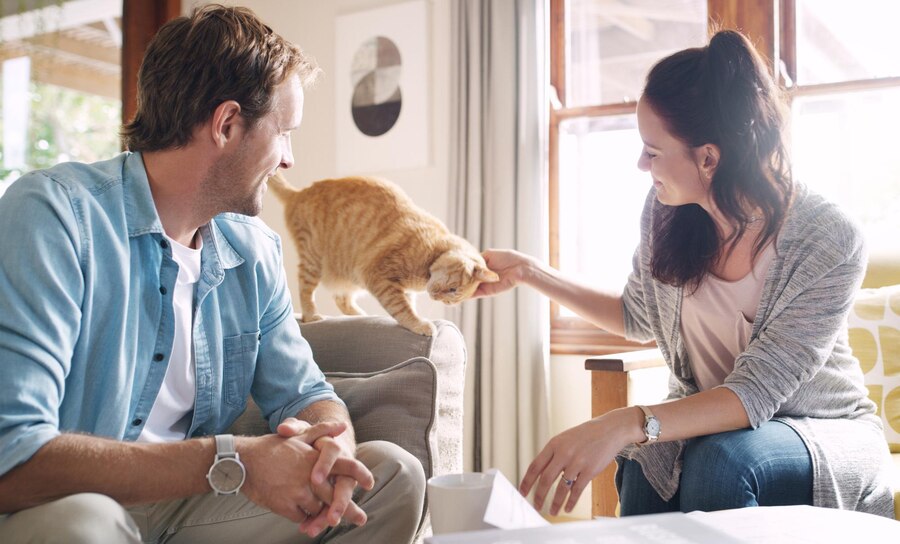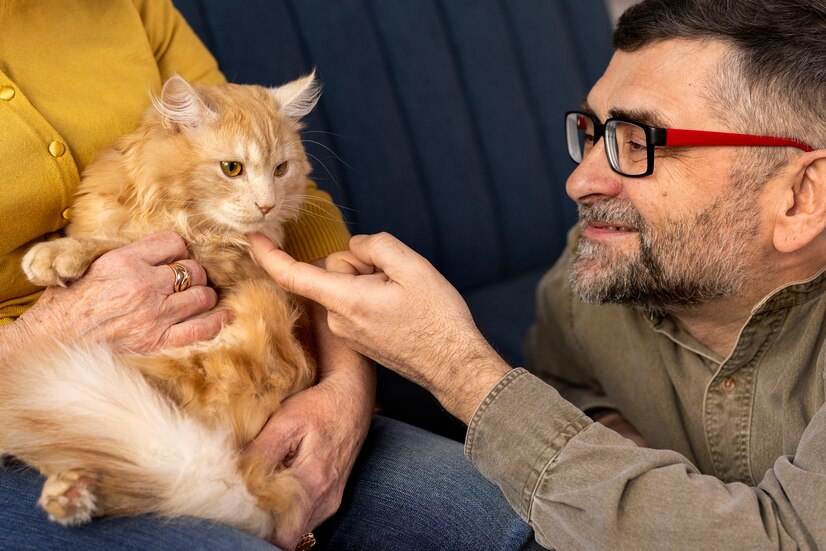Ever noticed how your cat suddenly has a lot to say? Maybe they’ve always been a bit talkative, but now it seems like every little thing prompts a meow or chirp. Whether they’re asking for attention, food, or just trying to fill the silence, it’s like they’ve turned up the volume on their inner thoughts. Read Kidney Disease in Cats: Early Signs You Shouldn’t Ignore
If it feels like your cat has something new to share every minute, you’re probably wondering if this is just their usual self or if there’s something more to it. Let’s explore what could be behind this vocal streak and when to keep an ear out.
Can Cats Talk?
Cats cannot talk like humans but communicate effectively through other means. They use vocalizations like meowing (primarily with humans), purring, chirping, and hissing to express themselves. Body language is equally important – cats communicate through tail positions, ear movements, and facial expressions. They also use physical contact like rubbing against people or head-butting to show affection and mark territory. Read Stages Of Kidney Disease In Cats

How Cats Communicate with Humans
Cats have a fascinating way of interacting with people that feels like they’re “talking” to us in their own language. Unlike dogs, who might bark or whine, cats tend to communicate through a mix of meows, purrs, and even subtle physical gestures. They actually reserve their meows mainly for us, their human companions, rather than other cats.
According to Dr. Wailani Sung, a respected animal behaviorist, meowing is a flexible way for cats to express themselves. A short, high-pitched meow is often a friendly greeting, while louder, drawn-out meows might mean they’re hungry or want your attention right away. Read Can a Dog Get a Cat Pregnant?
Another part of their “cat language” is purring, which we usually take as a sign they’re content. Animal care writer Sandy Eckstein points out that cats do often purr when they’re relaxed and happy, like when they’re curled up next to us. But interestingly, purring isn’t always about feeling cozy; it can also be a way for cats to calm themselves down when they’re feeling stressed or unwell.
So, when your cat purrs, it’s usually a good thing, but it’s worth keeping in mind that they might also be trying to self-soothe. Context matters with cats, and every little sound and gesture adds up to a unique, cat-style conversation.
How Cats Talk to Each Other
When cats communicate with each other, their “language” shifts to something a bit different from what they use with people. Cats tend to rely more on body language and subtle sounds rather than on vocalizations like meows, which are primarily used to communicate with us.
As Dr. Sandra C. Mitchell explains, a cat’s body language is packed with meaning. From the position of their tail to the way they hold their ears, each gesture gives clues about how they’re feeling. For instance, a tail held high and straight can show confidence, while a tail tucked low often means the cat is feeling nervous or unsure. Ears facing forward indicate curiosity, whereas ears flattened back suggest fear or annoyance. Eye contact is another powerful indicator, with a slow blink serving as a classic sign of trust and friendliness between cats. Read How To Clean a Litter Box Step by Step
Although meowing isn’t usually part of cat-to-cat “conversations,” cats do make sounds to get messages across. Hisses and growls are unmistakable signals to give space, and trilling—a soft, rolling sound—is a more affectionate gesture, often used by mother cats with their kittens or between cats that are close. When cats yowl or howl, it’s usually a sign of distress, often during tense encounters or when they’re feeling cornered. These cues and sounds create a complex language that cats use to interact with one another, helping them navigate both friendly and challenging situations within their social circles.
Communicating Through Physical Contact
Cats are social animals that use physical contact to connect with each other. When greeting, they may touch noses, which is their way of saying “hello.” They might also rub their heads and bodies against each other as a sign of trust and bonding. Dr. Sung mentions that this close interaction allows cats to share scents, which is crucial for building a sense of comfort and familiarity. Cats that are particularly close may even hook tails or rub their sides together. Read Can cats see colors?
Cats have scent glands on their faces and bodies, and rubbing on objects or other cats deposits their scent, marking the space as part of their “territory.” Dr. Mitchell emphasizes that by marking objects and people, cats create a shared scent environment that reassures them. Some cats prefer head or side rubs over being petted along their back because their social preferences lean toward these head-to-side greetings. Read Why Does My Cat Follow Me To The Bathroom
Can We Talk to Our Cats?
Although cats don’t understand words as we do, they are sensitive to the tone and patterns in our voices. With time, many cats learn to respond to their name, the sound of a can opening, or familiar phrases you use with them. Sandy Eckstein suggests that building a strong bond with your cat involves learning to interpret their cues while also using gentle, clear tones to communicate back. You might even notice your cat responding to your body language and emotions, mirroring your moods or reacting to changes in your tone.

Observing your cat’s reactions to different sounds and interactions can help strengthen your understanding of each other’s “language.” Speaking in a soft, calm voice often helps put your cat at ease, while mimicking some of their behaviors, like slow blinking, can build a stronger bond. By respecting their signals and creating a communication style together, you can “talk” with your cat in a way that feels rewarding for both of you. Read Why Is My Cat Not Drinking Water? Causes, and Solutions
FAQ section about can cats talk?
Can cats talk English?
Cats cannot speak English or any human language. However, they can learn to respond to certain sounds, tones, and phrases we use regularly. For example, many cats recognize their names, familiar commands, or sounds related to food or affection.
Can cats talk like humans?
Cats do not have the vocal structures needed to mimic human speech precisely. Instead, they communicate using meows, purrs, chirps, and body language. Each sound has a meaning, often used to express needs, emotions, or responses to their surroundings.
Can cats talk to humans?
Yes, cats can “talk” to humans through a range of sounds and gestures. Meowing, purring, and rubbing are some ways they communicate their needs or feelings. Cats often use more vocalizations with humans than with other cats to get our attention.
Can cats talk to each other?
Cats communicate with each other using body language, eye contact, and subtle sounds like hisses, growls, and chirps. They may also engage in scent marking to share territory and familiarity, but they rarely meow at each other as they do with humans.
Can cats talk in the house?
Yes, cats often vocalize in the house, especially if they want food, attention, or to greet their owners. Indoor cats may develop unique sounds or routines specific to their home environment to communicate with their humans.
Can cats talk funny?
Some cats make unusual sounds that might sound funny, such as chattering when they see birds outside or mimicking certain noises they associate with excitement. Cats also have unique personalities that can lead to a variety of vocal expressions.
Can cats learn to talk?
While cats can’t learn human speech, they can learn to associate certain words or sounds with actions or objects, like “treats” or “bedtime.” Through repetition and positive reinforcement, cats can understand basic cues in their unique way.



